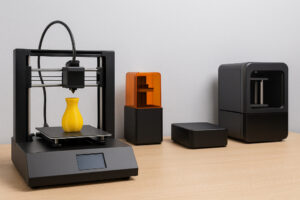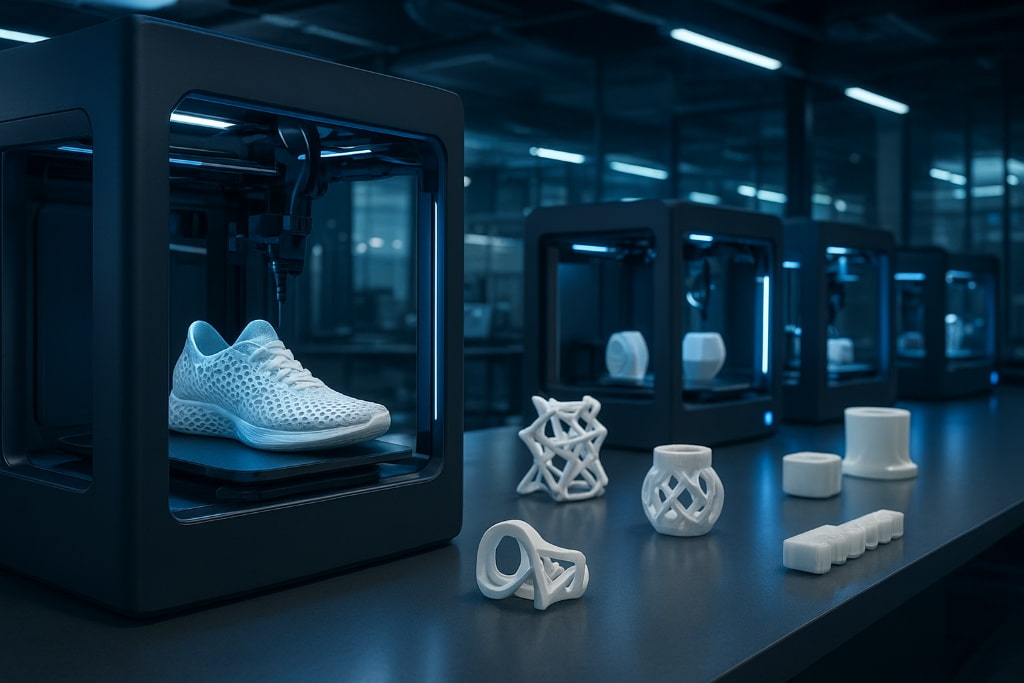
- +91 8055996347
- info@3dreality.in
- Chapru nagar square, CA road, Nagpur, Maharashtra-440008

Imagine ordering a product online in the morning and having it custom-made and delivered by evening — no warehouses, no excess inventory, just pure efficiency. Sounds futuristic, right?
Well, the future is closer than you think, and 3D printing is leading this revolution in on-demand manufacturing.
On-demand manufacturing is exactly what it sounds like: producing goods only when there’s a demand. Instead of stocking thousands of units in a warehouse, companies create products only after receiving an order.
Now combine this idea with 3D printing, a technology that builds objects layer by layer using digital models — and you get a manufacturing system that’s faster, cheaper, and more customizable than ever before.
From automotive parts to medical implants, and even furniture or footwear — 3D printing is redefining how products are made, distributed, and delivered.
But wait… what’s driving this massive shift? Let’s uncover the game-changing factors that are shaping the future of on-demand manufacturing.
Traditional manufacturing often means large batches, extra inventory, and tons of wasted material.
3D printing flips this equation completely.
It allows manufacturers to use exactly the amount of material needed — no more, no less. This not only cuts production costs but also reduces environmental impact.
In a world moving toward sustainability, that’s a huge win.
Remember when customization was expensive and time-consuming? Not anymore.
With 3D printing, customers can easily request personalized designs — from a phone case engraved with their initials to a prosthetic limb tailored to their exact body measurements.
On-demand manufacturing means mass customization — a term that used to sound impossible. But today, it’s the next big trend.
Here’s where it gets really interesting.
3D printing eliminates the need for global shipping and complex supply chains.
Imagine a network of local micro-factories that can print products right where the customer lives.
This means faster delivery, lower transportation costs, and reduced carbon footprints.
In the future, we might see digital blueprints replacing shipping containers, as companies send product files across the globe instead of physical goods.
Previously, setting up a manufacturing unit required massive investment.
But with 3D printing, even small entrepreneurs can compete with industrial giants.
A single printer and a smart idea are enough to start a product line today — whether it’s custom jewelry, drone parts, or home decor.
On-demand manufacturing is democratizing production, giving creators and startups the same power as large-scale industries once had.
You might be surprised to learn how fast this transformation is spreading.
And this is just the beginning.
Now, here comes the twist.
As promising as it sounds, 3D printing still faces challenges: speed, scalability, and material limitations.
Can it really replace traditional factories completely?
That’s the million-dollar question experts are debating right now.
But one thing is clear — the moment 3D printing becomes faster and more versatile, the entire manufacturing industry could change overnight.
So, what would happen when your favorite brand stops producing in factories and starts printing products for you directly?
That’s a future we might see sooner than you expect.
By 2030, analysts predict that on-demand 3D manufacturing could dominate key industries — from aerospace to consumer electronics.
We might see marketplaces where people simply upload a design, choose materials, and get it printed locally.
Imagine Amazon not just delivering products — but printing them in your city.
Imagine hospitals printing organs instead of waiting for donors.
Imagine a world where creativity has no manufacturing limits.
Sounds like science fiction? It’s already becoming science fact.
The future of on-demand manufacturing with 3D printing isn’t just about faster production — it’s about freedom, sustainability, and innovation.
We’re stepping into an era where every product can be unique, every design can be personal, and every order can be made instantly.
The suspense lies not in if it will happen, but how fast it will take over.
One thing’s for sure — the next industrial revolution won’t be built in factories…
It’ll be printed, layer by layer.